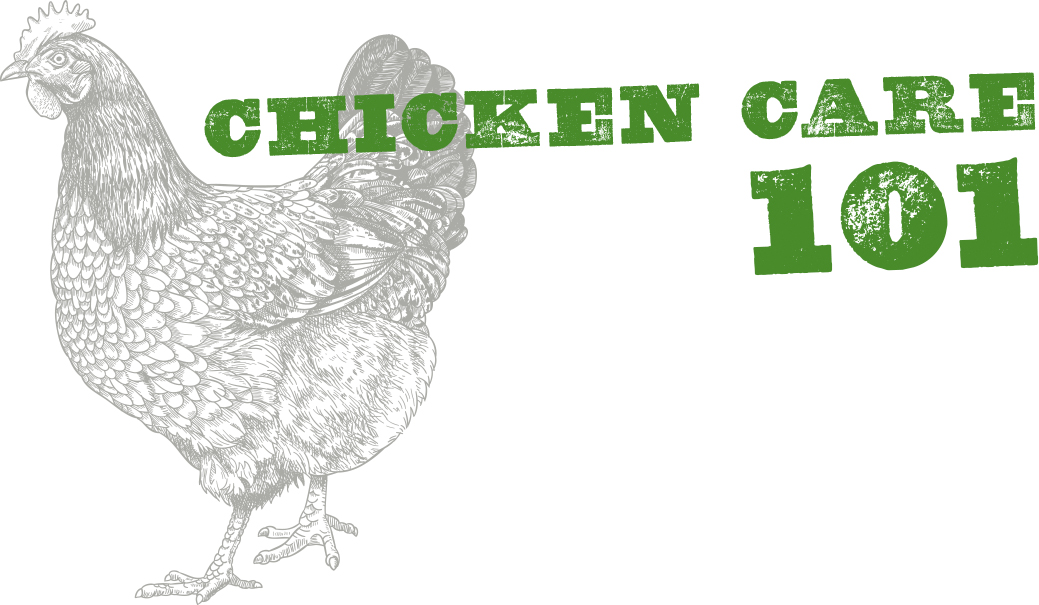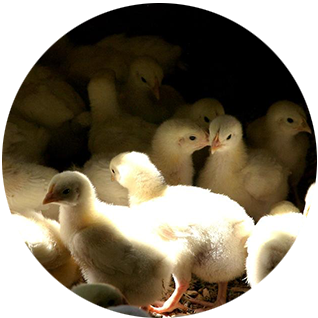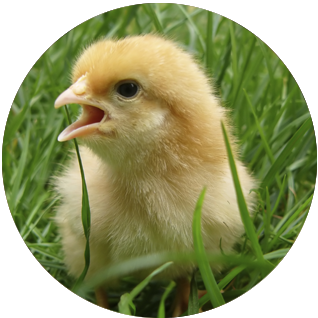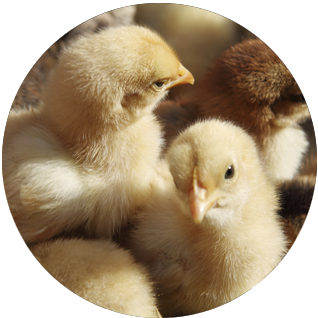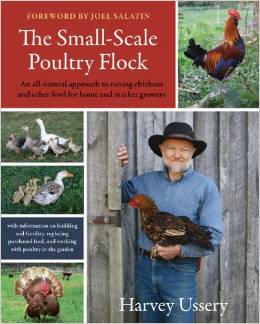Chicks
Mail order your chicks or find them through your local chicken enthusiast group. Some hatcheries specialize in heritage breed poultry if you’re interested in preserving bio-divserity and historical breeds. You can get a mix and even go in on an order with friends. Order well in advance of your intended start date to be guaranteed the type of bird(s) you want to build your flock. A mail order hatchery will generally give you a day that you should expect your chickens. Be sure to be available to pick your special delivery up from the Post Office.
Shelter
A stall in a barn, a portion of an enclosed porch, a corner of a garage, part of a shed, a large box, all of these would work fine for your chicks’ first home. Just make sure the chicks are contained, safe from predators, and in close proximity to their food and water. Build them a cozy bed made of wood shavings, hemp bedding, sawdust, or shredded newspaper that can be easily swept or replaced.
Heat
Keep your chicks’ shelter at 90-95º F to start, with no drafts. Use a heat lamp for a heat source and elevate it above the floor or ground of your shelter. For day-old chicks, start at 90-95º F and reduce the heat approximately one degree per day for 30 days. Use a thermometer to be certain the area under the heat lamp (far enough away from the birds to be safe) is the appropriate temperature.
Water
Provide your chicks with a gravity feeder full of clean water at all times. When your chicks arrive, take each chick gently in your hand and dip its beak into the water a couple times until it takes a drink. Your new friend will be thirsty. Make sure s/he knows where their water is. Then give the chick food the same way, by dipping its beak into the feed.
Food
LAYERS
1st Month – Approximately 5 lbs. Starter Feed per bird*
2-4 Months – Approximately 1/4 lb. per day Grower Feed per bird
4 Months and on – Approximately 1/4 lb. per day Layer Feed per bird
12 Layers will require:
(1) 50 lb. Bag Soy-Free Poultry Starter Feed
(5) 50 lb. Bags Soy-Free Poultry Broiler/Grower Feed
(2) 50 lb. Bags per month Soy-Free Layer Feed (after 4 months)
BROILERS
Weeks 1-4 – Approximately 5 lbs. Starter Feed per bird*
Weeks 5-10 – Approximately 15 lbs. Broiler/Grower Feed per bird
A finished broiler will consume approximately 20 lbs. of feed total.
30 Broilers will require:
(2) 50 lb. Bags Soy-Free Poultry Starter Feed
(7) 50 lb. Bags Soy-Free Poultry Broiler/Grower Feed
*TIP: When giving your chicks Starter Feed, mix in some pulverized, hard-boiled organic eggs for the first couple of days (it’s what they have been dining on so far!)



